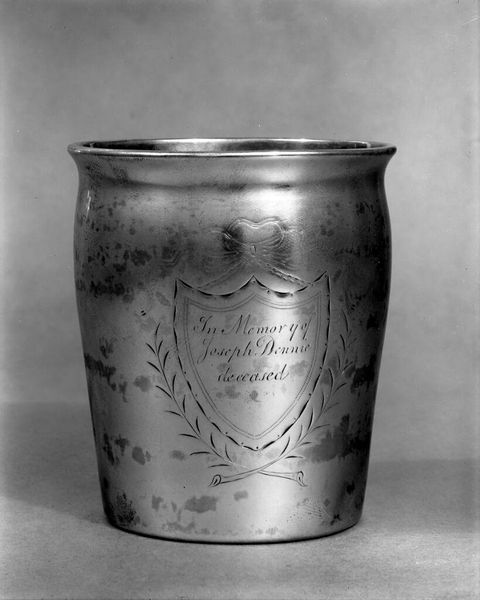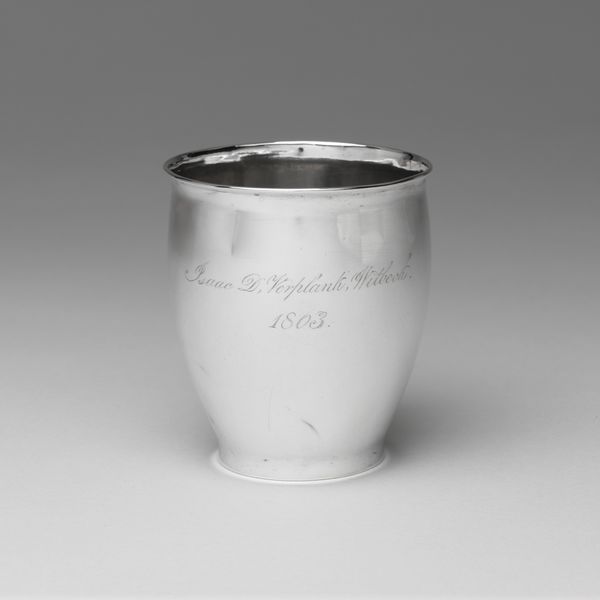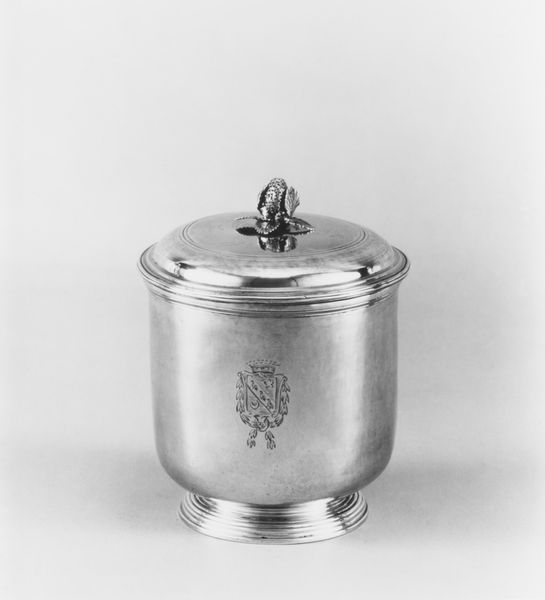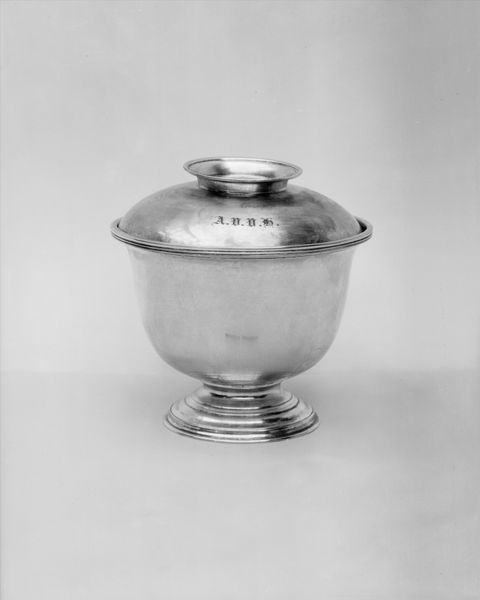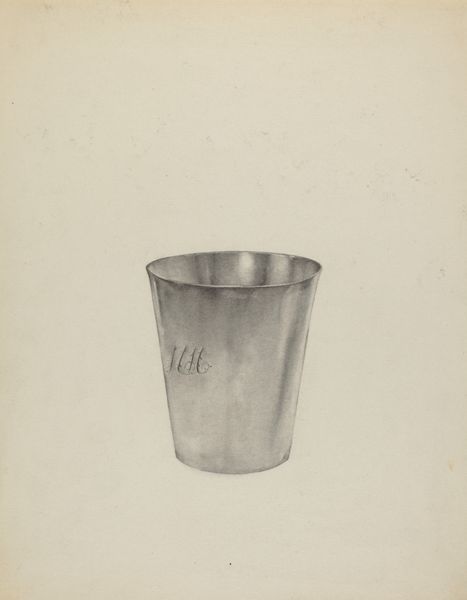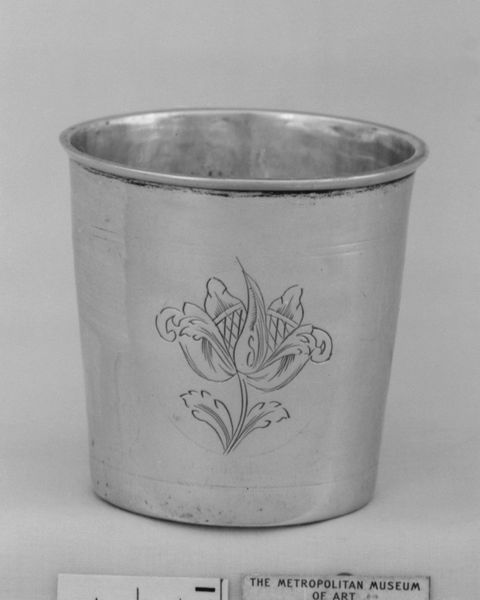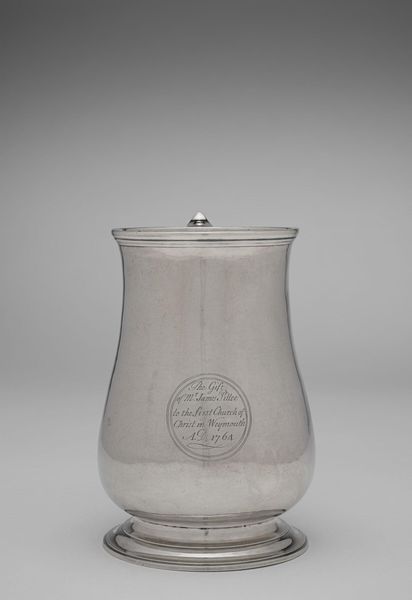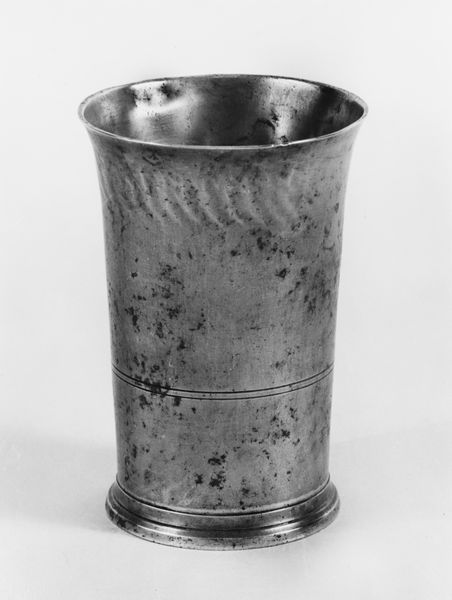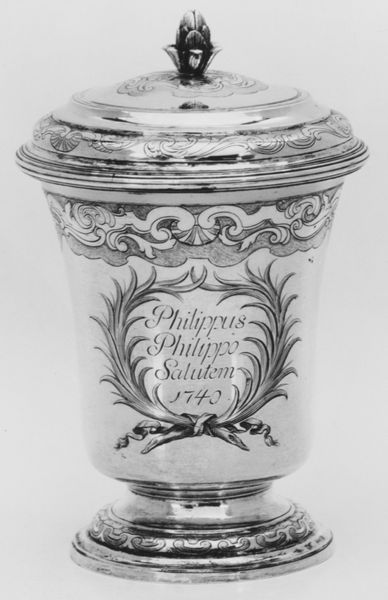
silver, sculpture
#
neoclacissism
#
silver
#
sculpture
Dimensions: Height: 4 in. (10.2 cm)
Copyright: Public Domain
Editor: So, this object is a silver beaker dating back to 1811. It’s a deceptively simple form, almost austere, but the inscription gives it such presence. What's your read on this seemingly simple beaker, considering its context? Curator: The beauty of this neoclassical object lies precisely in that tension between its spare design and the potent message it carries. In 1811, Napoleon was at the height of his power and influence. This isn't just a cup; it's a symbol of imperial ambition, created during a period of intense social upheaval and redefinition of power across Europe. Who do you imagine this beaker being used by? Editor: Someone in the Emperor’s inner circle, maybe? Was silver a common material, or was it indicative of something larger? Curator: The silver material speaks to status and privilege, certainly. But it's crucial to remember that luxury goods during the Napoleonic era were also deeply implicated in colonial economies and systems of extraction and enslavement. We should ask ourselves whose labor made this beaker possible. Whose land was mined for this silver? The inscription also hints at political and personal connections of the commissioner of this piece. Editor: It’s amazing to think that such a simple object holds such complexity. I am beginning to look at it as a cultural object deeply embedded in historical narratives. Curator: Exactly. This is why engaging with objects like this ‘Beaker’ is valuable. It offers entry points into thinking about intersections of power, materiality, and social identity within a specific historical moment. I see Neoclassicism very differently now, it makes me reflect more. Editor: Yes, this conversation has pushed me to consider these historical undercurrents with much more complexity. Thanks for helping me to think beyond the aesthetic qualities!
Comments
No comments
Be the first to comment and join the conversation on the ultimate creative platform.
